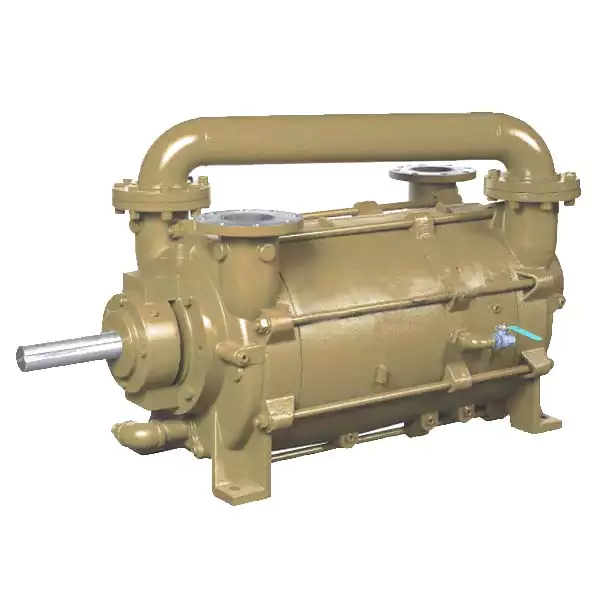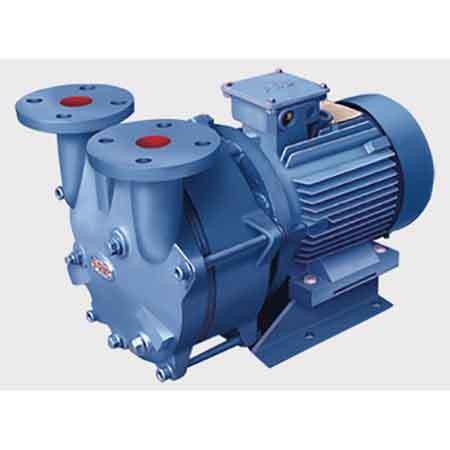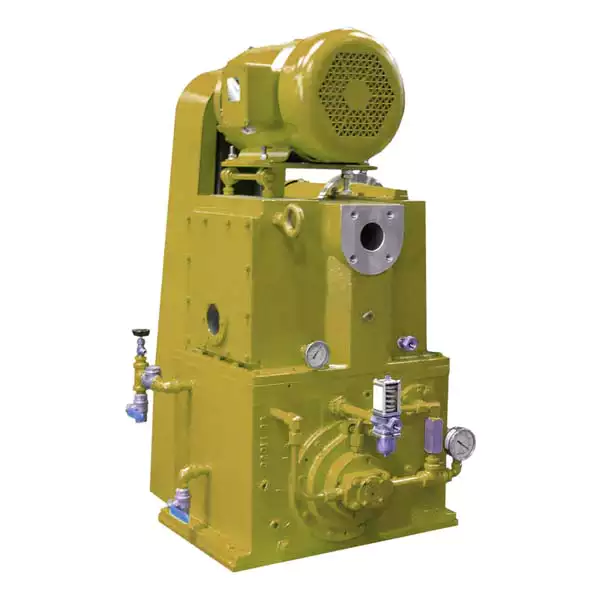Product Description
12V Micro Vacuum and Air Diaphragm Pump (DC Brush motor)
♦ 16000M2 modern factory with its own physical property rights, ESD anti-static control dust free workshop,
100+ sets of professional imported equipment
♦ 4 major professional and precision laboratories that meet the CNAS national laboratory accreditation standards
♦ More than 50 patents in the micro water pump industry, strong research and development strength, and master advanced industry technology
♦ Complete certification, passed CE, ROHS, REACH, WRAS, Food Grade and other certification
Remarks:
– We are high-end Brushless DC pumps manufacturer. Can provide customized services
– If you are interested in our products, pls feel free to contact us
Our Micro Diaphragm Pumps are available with a choice of 4 different drive motors.
A- Premium duty brush DC motor
lifetime 3,000hours,longer endurance lifetime than other normal DC membrane pump
B- Economical brush DC motor
lifetime:1,500hours
C- Coreless Brushless DC Motor
A brushless electronically commutated dc motor (electronics integrated in motor), the motor runs vibration and spark free, almost silently, is very dynamic and extremely durable, ideal life-time 15000 hours
D- Coreless Brushless DC motor with outer controller
With all advantages of coreless brushless DC motor, ideal life-time 15000 hours, and outer controller can realize more control functions of PWM or 0 -5V speed adjustment, brake, ~ instant starting work
H- Brushless DC Motor
Long lifetime 10000hour
Product Specification
| Model | TM30A-A | TM30A-B | TM30A-C | TM30A-D |
| Motor type |
A–high performance Brush motor |
B–Brush motor | C–Brushless motor | D–Brushless motor |
| Pump Assembly Rated Life | 3000hour | 1000hour | 15000hour | 15000hour |
| Gas flow | 6L/min | 4.5L/min | 4.5L/min | 4L/min |
| Rated Voltage | 12V | 6/12/24v | 6/12/24v | 6/12/24v |
| No-load Current | 0.24A | 0.4/0.24/0.15A | ||
| Media | Most gas | |||
| Max Pressure | 120kpa | |||
| Max Vacuum | -70kpa | |||
| Ambient Temperature | 41 to 158 F(5 to 70C) | |||
| Pump size | 75.5*30.4*54.6mm | 75*31.2*57.5mm | 79*31.2*57.5mm | 79*31.2*57.5mm |
| Weight | 200g | 150g | 250g | 250g |
| Inlet&Outlet | OD 4.8mm/ID 2.6mm,hose suggestion:ID 4.0mm | |||
| Materials |
pump head Nylon, membrane EPDM , valve EPDM |
pump head Nylon, membrane EPDM / PTFE, valve EPDM / FPM |
pump head Nylon, membrane EPDM / PTFE, valve EPDM / FPM |
pump head Nylon, membrane EPDM / PTFE, valve EPDM / FPM |
| Wetted material options |
1.Optional membrane materials: 2.Optional valve materials: |
|||
Get more Technical data, Please Send message
CHINAMFG Diaphragm series gas pumps are the perfect combination of form and function. The use of a special diaphragm allows the pump to transfer both air and liquid efficiently. The compact lightweight unit offers optimum sizing for analytical equipment.
ADVANTAGES
♦ High pneumatic performance
♦ Compact size/high power density
♦ Uncontaminated flow – no contamination of the media due to oil-free operation
♦ Maintenance-free
♦ Long product life
♦ Low sound level
♦ Low power consumption
♦ Can operate in any orientation
♦ Suction
The versatility of CHINAMFG pumps allows a wide field of applications to be covered. Over many years our pumps have proved themselves in the following areas:
1.Industrial pressure and vacuum applications
2.Portable Analytical Instruments
3.Medical Equipment
4.Air Quality Sampling Monitors
5.Respiration Monitors
6.Gas or Odor Leak Detectors
Performance Curve
More About Products
TOPS INDUSTRY AND TECHNOLOGY CO., LIMITED started in 2005, is the world’s leading supplier of micro
pump solutions, and won the “National High-tech Enterprise”. The company is mainly engaged in the research and development and manufacture of miniature brushless DC
pumps and miniature diaphragm pumps. 80% of the products are exported to high-end markets in Europe and
America, and are mainly used in water heaters, small household appliances, water heating mattresses, medical equipment, smart toilets, automobile circulation systems, etc. The company has always been known for its high quality and high batch consistency, and has established solid and good cooperative relations with many world-renowned brands, such as: Tesla, Whirlpool, Flextronics, Kohler, GE, Roca, KTM, Geberit, etc.
Get more Technical data, Please Send message
/* January 22, 2571 19:08:37 */!function(){function s(e,r){var a,o={};try{e&&e.split(“,”).forEach(function(e,t){e&&(a=e.match(/(.*?):(.*)$/))&&1
| Material: | Pump Head Nylon, Membrane EPDM / PTFE, Valve EPDM |
|---|---|
| Power: | Electric |
| Function: | Electronic Type, Field Bus, Medical, Lab, |
| Motor: | DC Brush, Brushless, Coreless Brushless |
| Feature: | Oil-Free,Compact Size, Corrosionresistant, Mainten |
| Lifetime: | 15000hour,10000hour,3000hour,1000hour |
| Customization: |
Available
|
|
|---|

How Do You Maintain and Troubleshoot Vacuum Pumps?
Maintaining and troubleshooting vacuum pumps is essential to ensure their optimal performance and longevity. Here’s a detailed explanation:
Maintenance of Vacuum Pumps:
1. Regular Inspection: Perform regular visual inspections of the pump to check for any signs of damage, leaks, or abnormal wear. Inspect the motor, belts, couplings, and other components for proper alignment and condition.
2. Lubrication: Follow the manufacturer’s guidelines for lubrication. Some vacuum pumps require regular oil changes or lubrication of moving parts. Ensure that the correct type and amount of lubricant are used.
3. Oil Level Check: Monitor the oil level in oil-sealed pumps and maintain it within the recommended range. Add or replace oil as necessary, following the manufacturer’s instructions.
4. Filter Maintenance: Clean or replace filters regularly to prevent clogging and ensure proper airflow. Clogged filters can impair pump performance and increase energy consumption.
5. Cooling System: If the vacuum pump has a cooling system, inspect it regularly for cleanliness and proper functioning. Clean or replace cooling components as needed to prevent overheating.
6. Seals and Gaskets: Check the seals and gaskets for signs of wear or leakage. Replace any damaged or worn seals promptly to maintain airtightness.
7. Valve Maintenance: If the vacuum pump includes valves, inspect and clean them regularly to ensure proper operation and prevent blockages.
8. Vibration and Noise: Monitor the pump for excessive vibration or unusual noise, which may indicate misalignment, worn bearings, or other mechanical issues. Address these issues promptly to prevent further damage.
Troubleshooting Vacuum Pump Problems:
1. Insufficient Vacuum Level: If the pump is not achieving the desired vacuum level, check for leaks in the system, improper sealing, or worn-out seals. Inspect valves, connections, and seals for leaks and repair or replace as needed.
2. Poor Performance: If the pump is not providing adequate performance, check for clogged filters, insufficient lubrication, or worn-out components. Clean or replace filters, ensure proper lubrication, and replace worn parts as necessary.
3. Overheating: If the pump is overheating, check the cooling system for blockages or insufficient airflow. Clean or replace cooling components and ensure proper ventilation around the pump.
4. Excessive Noise or Vibration: Excessive noise or vibration may indicate misalignment, worn bearings, or other mechanical issues. Inspect and repair or replace damaged or worn parts. Ensure proper alignment and balance of rotating components.
5. Motor Issues: If the pump motor fails to start or operates erratically, check the power supply, electrical connections, and motor components. Test the motor using appropriate electrical testing equipment and consult an electrician or motor specialist if necessary.
6. Excessive Oil Consumption: If the pump is consuming oil at a high rate, check for leaks or other issues that may be causing oil loss. Inspect seals, gaskets, and connections for leaks and repair as needed.
7. Abnormal Odors: Unusual odors, such as a burning smell, may indicate overheating or other mechanical problems. Address the issue promptly and consult a technician if necessary.
8. Manufacturer Guidelines: Always refer to the manufacturer’s guidelines and recommendations for maintenance and troubleshooting specific to your vacuum pump model. Follow the prescribed maintenance schedule and seek professional assistance when needed.
By following proper maintenance procedures and promptly addressing any troubleshooting issues, you can ensure the reliable operation and longevity of your vacuum pump.

Can Vacuum Pumps Be Used for Chemical Distillation?
Yes, vacuum pumps are commonly used in chemical distillation processes. Here’s a detailed explanation:
Chemical distillation is a technique used to separate or purify components of a mixture based on their different boiling points. The process involves heating the mixture to evaporate the desired component and then condensing the vapor to collect the purified substance. Vacuum pumps play a crucial role in chemical distillation by creating a reduced pressure environment, which lowers the boiling points of the components and enables distillation at lower temperatures.
Here are some key aspects of using vacuum pumps in chemical distillation:
1. Reduced Pressure: By creating a vacuum or low-pressure environment in the distillation apparatus, vacuum pumps lower the pressure inside the system. This reduction in pressure lowers the boiling points of the components, allowing distillation to occur at temperatures lower than their normal boiling points. This is particularly useful for heat-sensitive or high-boiling-point compounds that would decompose or become thermally degraded at higher temperatures.
2. Increased Boiling Point Separation: Vacuum distillation increases the separation between the boiling points of the components, making it easier to achieve a higher degree of purification. In regular atmospheric distillation, the boiling points of some components may overlap, leading to less effective separation. By operating under vacuum, the boiling points of the components are further apart, improving the selectivity and efficiency of the distillation process.
3. Energy Efficiency: Vacuum distillation can be more energy-efficient compared to distillation under atmospheric conditions. The reduced pressure lowers the required temperature for distillation, resulting in reduced energy consumption and lower operating costs. This is particularly advantageous when dealing with large-scale distillation processes or when distilling heat-sensitive compounds that require careful temperature control.
4. Types of Vacuum Pumps: Different types of vacuum pumps can be used in chemical distillation depending on the specific requirements of the process. Some commonly used vacuum pump types include:
– Rotary Vane Pumps: Rotary vane pumps are widely used in chemical distillation due to their ability to achieve moderate vacuum levels and handle various gases. They work by using rotating vanes to create chambers that expand and contract, enabling the pumping of gas or vapor.
– Diaphragm Pumps: Diaphragm pumps are suitable for smaller-scale distillation processes. They use a flexible diaphragm that moves up and down to create a vacuum and compress the gas or vapor. Diaphragm pumps are often oil-free, making them suitable for applications where avoiding oil contamination is essential.
– Liquid Ring Pumps: Liquid ring pumps can handle more demanding distillation processes and corrosive gases. They rely on a rotating liquid ring to create a seal and compress the gas or vapor. Liquid ring pumps are commonly used in chemical and petrochemical industries.
– Dry Screw Pumps: Dry screw pumps are suitable for high-vacuum distillation processes. They use intermeshing screws to compress and transport gas or vapor. Dry screw pumps are known for their high pumping speeds, low noise levels, and oil-free operation.
Overall, vacuum pumps are integral to chemical distillation processes as they create the necessary reduced pressure environment that enables distillation at lower temperatures. By using vacuum pumps, it is possible to achieve better separation, improve energy efficiency, and handle heat-sensitive compounds effectively. The choice of vacuum pump depends on factors such as the required vacuum level, the scale of the distillation process, and the nature of the compounds being distilled.

What Are the Primary Applications of Vacuum Pumps?
Vacuum pumps have a wide range of applications across various industries. Here’s a detailed explanation:
1. Industrial Processes:
Vacuum pumps play a vital role in numerous industrial processes, including:
– Vacuum Distillation: Vacuum pumps are used in distillation processes to lower the boiling points of substances, enabling separation and purification of various chemicals and compounds.
– Vacuum Drying: Vacuum pumps aid in drying processes by creating a low-pressure environment, which accelerates moisture removal from materials without excessive heat.
– Vacuum Packaging: Vacuum pumps are used in the food industry to remove air from packaging containers, prolonging the shelf life of perishable goods by reducing oxygen exposure.
– Vacuum Filtration: Filtration processes can benefit from vacuum pumps to enhance filtration rates by applying suction, facilitating faster separation of solids and liquids.
2. Laboratory and Research:
Vacuum pumps are extensively used in laboratories and research facilities for various applications:
– Vacuum Chambers: Vacuum pumps create controlled low-pressure environments within chambers for conducting experiments, testing materials, or simulating specific conditions.
– Mass Spectrometry: Mass spectrometers often utilize vacuum pumps to create the necessary vacuum conditions for ionization and analysis of samples.
– Freeze Drying: Vacuum pumps enable freeze-drying processes, where samples are frozen and then subjected to a vacuum, allowing the frozen water to sublimate directly from solid to vapor state.
– Electron Microscopy: Vacuum pumps are essential for electron microscopy techniques, providing the necessary vacuum environment for high-resolution imaging of samples.
3. Semiconductor and Electronics Industries:
High vacuum pumps are critical in the semiconductor and electronics industries for manufacturing and testing processes:
– Semiconductor Fabrication: Vacuum pumps are used in various stages of chip manufacturing, including deposition, etching, and ion implantation processes.
– Thin Film Deposition: Vacuum pumps create the required vacuum conditions for depositing thin films of materials onto substrates, as done in the production of solar panels, optical coatings, and electronic components.
– Leak Detection: Vacuum pumps are utilized in leak testing applications to detect and locate leaks in electronic components, systems, or pipelines.
4. Medical and Healthcare:
Vacuum pumps have several applications in the medical and healthcare sectors:
– Vacuum Assisted Wound Closure: Vacuum pumps are used in negative pressure wound therapy (NPWT), where they create a controlled vacuum environment to promote wound healing and removal of excess fluids.
– Laboratory Equipment: Vacuum pumps are essential in medical and scientific equipment such as vacuum ovens, freeze dryers, and centrifugal concentrators.
– Anesthesia and Medical Suction: Vacuum pumps are utilized in anesthesia machines and medical suction devices to create suction and remove fluids or gases from the patient’s body.
5. HVAC and Refrigeration:
Vacuum pumps are employed in the HVAC (Heating, Ventilation, and Air Conditioning) and refrigeration industries:
– Refrigeration and Air Conditioning Systems: Vacuum pumps are used during system installation, maintenance, and repair to evacuate moisture and air from refrigeration and air conditioning systems, ensuring efficient operation.
– Vacuum Insulation Panels: Vacuum pumps are utilized in the manufacturing of vacuum insulation panels, which offer superior insulation properties for buildings and appliances.
6. Power Generation:
Vacuum pumps play a role in power generation applications:
– Steam Condenser Systems: Vacuum pumps are used in power plants to remove non-condensable gases from steam condenser systems, improving thermal efficiency.
– Gas Capture: Vacuum pumps are utilized to capture and remove gases, such as hydrogen or helium, in nuclear power plants, research reactors, or particle accelerators.
These are just a few examples of the primary applications of vacuum pumps. The versatility and wide range of vacuum pump types make them essential in numerous industries, contributing to various manufacturing processes, research endeavors, and technological advancements.


editor by Dream 2024-05-07
by
Tags:
Leave a Reply